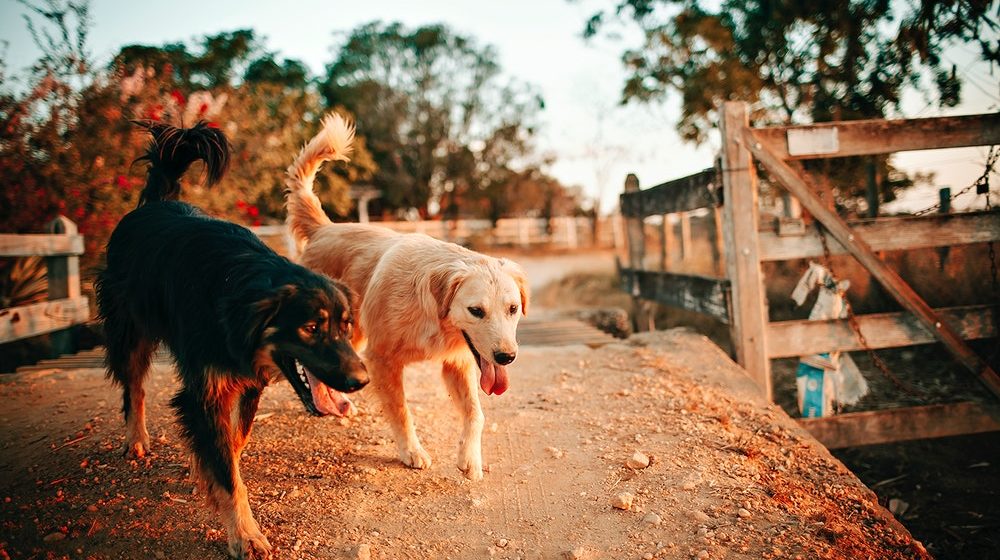Birthed from the counterculture of the ’60s, the pet playground has witnessed a major shift in how Americans relate to their canines
By Alissa Greenberg smithsonianmag.com
A Friday afternoon at Ohlone Dog Park in Berkeley, California, is a riot of canine joy. A collie chases a ball with thrilled abandon; a boxer puppy learns to run on his still-new legs; a heap of paws and snouts tangles in a friendly wrestling match. Nearby, in the corner, stands an unlikely sight: a blue-painted mock fire hydrant dedicated to Doris Richards. “Donated By Friends,” the plaque next to it reads.
Richards (who died a decade ago) reportedly laughed when she heard about her hydrant. She saw it as a particularly fitting tribute to her work in creating what is widely believed to be the world’s first municipal dog park.
In the late 1960s, Berkeley was a hotbed of revolutionary ideas of all kinds. Perhaps most notably, the Bay Area community produced the free speech movement, which fueled activism against the Vietnam War and shaped American ideas about freedom of expression. That movement spawned the notorious People’s Park—a place designed for humans to be humans, saying and doing what they wanted. But less well known is another, related cultural byproduct: the idea that dogs needed a place to do what they wanted, too.
In 1979, with that idea in mind, activists from People’s Park began bringing their dogs to play at an empty lot that had been cleared for San Francisco’s new subway system. The “dog park” went viral as only an idea whose time has come can. Richards spent the rest of her life corresponding with municipalities around the world, advising them on how to build dog parks of their own. Forty years on, Ohlone Dog Park, has birthed some 2000 offspring and has left an indelible mark on the American city.
* * * * *
The 1960s and ’70s were a time of great change for American cities. Expanding urban areas swallowed up rings of newly established suburbs and outlying small towns, eating up their green spaces in favor of what became known as “urban sprawl.”. The open space that remained was hotly contested, resulting in the spread of strict leash laws rooted in fear and “anti-canine sentiment,” as writer Candace Crane put it in a 1990 Animals magazine article on dog parks. In San Francisco, for example, the city’s health code still requires dogs to be on a leash no longer than eight feet whenever they are off their owners’ property.
Berkeley hosted its share of conflict as it implemented leash laws. This was in addition to frequent clashes between activists and the police at People’s Park—including “Bloody Thursday,” which left one student dead and sent 128 people to the hospital. Even years after the Vietnam War had ended, the Park’s activists engaged with the authorities on other matters, in particular the creation of public parks and green space as the Bay Area urbanized. In 1979, activists from People’s Park pushed through fencing and took over an area that had been razed for subway tunnel construction, christening it People’s Park Annex. (The moniker “Ohlone Park,” named for the indigenous people who have lived in the Bay for millennia, came later.)
Tom Nigman was a student at nearby University of California, Berkeley at the time, and a self-described hippie. Nigman, who still lives near the park with his 15-year-old Labrador, Harvey, had participated in the People’s Park riots and enthusiastically joined the takeover of the Annex. He remembered dogs having the run of his neighborhood when he was younger, but times were changing. He was happy to see that, along with the demonstrations and bail fund drives for arrested protesters common at People’s Park, the new space was frequently full of dogs playing and socializing—especially during a period when they were increasingly hemmed in.
Eventually, the denizens of People’s Park Annex drew up a petition, Nigman says, hoping to receive explicit permission from the city to break the leash laws and let their dogs play freely within the Annex. Without a word to express what they wanted, they made one up.
“No one had heard the term before,” his colleague, Richards, wrote in an essay years later. “They kept saying: ‘A run?’
“‘No,’ we’d say, ‘a park. For dogs.’”
* * * * *
Richards—who over years of media coverage has been referred to as “Ohlone Dog Park Founder and Spiritual Guide Doris Richards,” “mother of the free dog movement,” and “the sort of woman who doesn’t go away, tail between her legs”—arrived on the scene not long after Nigman. She was a Bay Area native who worked stints at local hospitals and the university over the course of her lifetime, though persistent back problems and accompanying surgery often kept her at home.
Richards was in her 40s when she joined the group at the Annex. She used her unconventional post-surgery schedule to jump quickly into the fray, leading a years-long fight with the city over the logistics and complexities of the first-of-its-kind park.
“In the beginning there were only a handful of us, but we grew,” Nigman says. “We were in the hundreds by the time we were going to city council meetings. And it was people of all walks of life. Not just hippies or students or married couples with kids, the whole gamut.”
With a mix of determination, humor and persuasiveness, Richards helped organize first the petition, then letter writing and demonstrations at City Council meetings, many of which featured at least a hundred attendees in matching turquoise t-shirts. Eventually, through passionate debate and by bringing city staff to the park, Richards got the heads of the Berkeley Parks Department and Animal Control on her side, followed by the rest of the city administration.
In 1983, Berkeley agreed to establish an “experimental” dog park over the long-completed subway tunnel. Shortly after, Richards became the longest-serving president of the Ohlone Dog Park Association (ODPA), her husky, Killik, by her side. During her 17-year tenure, Richards led ODPA through fights with neighbors over noise pollution and zoning, presided over much beloved potluck barbecues and disseminated news through her often irreverent newsletter, Scoops, which ran with the tagline: “All the hot poop.”
During those initial years, ODPA fielded so many requests for advice on starting a dog park from other communities that it published a popular informational brochure including step-by-step instructions (Step 1: Form a park users’ association from a core group of dedicated people. “Some of them should know how to work the system, and if possible one of them should be an attorney.”)
A 1990 article in the San Francisco Chronicle noted that, within a few years, “the movement has hopscotched across Northern California.” By then, at least 25 dog parks had sprung up in the San Francisco area. Los Angeles and New York soon established their own—plus Austin, Texas; Toledo, Ohio; and Alexandria, Virginia. Richards even corresponded for a time with a town in Finland looking for canine help.
“God bless Berkeley,” Cathy Doyle, the head of the influential Los Angeles dog owner group Parkwatch, told the Chronicle. “Progressive Berkeley, of course, they’d be the first and show us the way.”
*
Urban planning, metropolitan identity, gentrification. “When you start unpacking what a dog park means, you really open a Pandora’s box,” says Julie Urbanik, who studies how animals interact with the man-made landscape as part of her work at the Coordinates Society in Missouri. The widespread adoption of dog parks grew out of the changing role of dogs in American society, Urbanik says, and they continue to drive that change, “reconfiguring” our ideas about and our relationships with dogs.
A generation ago, dogs worked and lived outside; their job was to be protectors or to help with farm work. “We didn’t give them birthday parties,” says Urbanik. “We didn’t take them to the groomer every week.” Dog parks appeared as the rapid urbanization of the late 20th century made access to “outside” increasingly limited and contentious. “That’s the heart of it,” Urbanik says. “It’s about how we look at public space; who gets to be in public space.”
DePaul University professor Heidi Nast sees the changing role of dogs in the city’s public square as part of a larger evolution. As we’ve moved away from agriculture and manufacturing, and as we’ve brought dogs inside our homes and our cities, she argues, we’ve recast them as parts of our family. Today, instead of a protector, families have what Nast calls a “little doggy baby,” sometimes literally bathed, dressed and pushed in a stroller. “That wouldn’t happen if you’re on a farm and you have lots of real babies,” she says.
In envisioning and creating public space for dogs, Urbanik adds, dog park proponents and designers are building on this private idea of a more-than-human family to envision a new kind of public city. A family with children believes they deserve a playground; a family with dogs believes the same.
“Dogs are for the first time being formally and regularly accommodated in doggie beaches, parks, high-class hotels, cafes and restaurants,” Nast writes in a series of influential articles on pet culture—included, essentially, in all the trappings of upper-class life.
She notes that it’s people with political power, disposable income and extra time who decide where dog parks go. Recent surveys in Calgary, Alberta; Texas; and Florida found some 80 percent of dog park users were white. All but one of Chicago’s 11 dog parks (at the time of Nast’s articles) were located on the city’s majority-white North Side, leading some to call the city’s South Side a “dog park desert.”
Although “technically any person can visit and enjoy the public spaces discussed here,” Nast argues, “their racialized location and privileged creation cannot be overlooked.” Wealthy families with pets often choose a neighborhood expressly because of its dog facilities; a recent poll by SunTrust Mortgage found that among American homebuyers aged 18 to 36, one-third listed better space for their dog as a top-three motivator. The dynamic, she notes, is often a driver of gentrification.
* * * * *
Decades after it introduced the world to dog parks, Berkeley is now not just a leader in human-dog relations. It also is among the most expensive places to live in the United States, and of late its canine obsession has taken on a new meaning.
“In very practical ways, pets are easier to love and more suitable to transient lives than are children,” Nast says, noting the balance many millennials struggle to strike between skyrocketing living costs and a precarious gig economy. She goes so far as to argue that, in some circles, dogs have “replaced” children. (Bay Area conventional wisdom does hold that San Francisco is home to more dogs than children—a statistic that local NPR affiliate KQED recently confirmed, finding that 115,000 children and at least 120,000 dogs lived in San Francisco in 2016. And a related 2017 story by The New York Times included a quote from venture capitalist Peter Thiel describing the city as “structurally hostile to families.”)
After 40 years, Ohlone Park hosts plenty of millennial owners, who, yes, bring their dogs in strollers but also on leashes; in sweaters but also ready to roll in the mud. The play areas were subdivided for small and large dogs several years back. At some point, ODPA installed a new water fountain.
But much remains the same. Nigman and other old-timers still meet regularly in the afternoons at one of the picnic tables. Dogs—big, little, curly, fluffy—still romp around them with sheer joy that borders on mania. They don’t care that theirs is the first dog park, nor about complexities and tensions behind their parks’ spread through the Bay Area and beyond. For them, inside this canine world, very little has changed.


